
Zeitlin - The Rise and Fall of the Judaean State - In three volumes
I wrote my first article on the history of the halakha forty-seven years ago. Two years later I submitted to the Dropsie College my doctoral dissertation, Megilat Taanit as a Source for Jewish Chronology and History in the Hellenistic and Roman Periods. I have since then written more than a hundred articles and monographs, on the history of the halakha, on Jewish institutions, on the chronology employed in the writings of Josephus and in I and II Maccabees, and on the political and religious history of the Judaeans during the Second Commonwealth.
All of these were based on the complex, ambiguous and involved historical sources for the Second Common- wealth. In the notes to this volume, the reader will find references to my previous essays, wherein I dealt at length with various intricate problems.
Sects and parties are the creation of a people and in turn mold its history. They are interwoven. Thus the history of the Sadducees and the Pharisees is dealt with step by step with the history of the Judaeans. This is why the reader cannot expect the full story of these parties to be told in this volume. In the volume which is to follow, I shall continue the history of the Sadducees and the Pharisees.
The biblical passages in this volume were quoted from the translation of the Jewish Publication Society; the passages from the Apocrypha from the translations of the Dropsie College edition; the passages from the rabbinic literature are my own translations. In quoting the Greek and Roman sources, I employed the Loeb Classical Library, although in some instances I found it necessary to make my own translations. For Justin’s History I used the Paris edition, 1810; the translations quoted are mine. For Josephus’ works I used Niese’s edition as well as the Latin translation of 1726; the English passages are usually from the Loeb Classical Library translations; in many instances, however, they are my own translations.
The name Makkabee in this work is here spelled with a k instead of the c which is more usual. The reason for this is that Judah’s surname, Makkabee, was intended to indicate his physical characteristic: he was hammer- headed. The word makkabee is derived from the Hebrew word makkeb, “mallet.”
SOLOMON ZEITLIN - The Rise and Fall of the Judaean State. A Political, Social and Religious History of the Second Commonwealth - VOLUME ONE 332-37 B.C.E.
THE JEWISH PUBLICATION SOCIETY OF AMERICA Philadelphia/5728-1968 - 530
SOLOMON ZEITLIN - The Rise and Fall of the Judaean State. A Political, Social and Religious History of the Second Commonwealth - VOLUME ONE 332-37 B.C.E. - CONTENTS
Introduction
Prolegomena
Part one Judaism Meets Hellenism
- 1. Alexander and His Successors
- 2. Between Egypt and Syria
- 3. Judah Makkabee
- 4. Jonathan the Hasmonean
Part two Judaea as an Independent State
- 1. Jonathan as Statesman
- 2. Simon
- 3. John Hyrcanus
Part three Social and Religious Developments in the Third and Second Centuries B.C.E.
- 1. Religious Divisions
- 2. The Bet Din
- 3. The Calendar
- 4. Festivals and Holy Days
- 5. The Temple
- 6. Religious Faith and Practice
-
7. The Literature
- a. The Biblical Books
- b. The Apocryphal Books
- 8. Judaean Society and Economy
Part four The Last Hasmoneans
- 1. Salome and Jannaeus Alexander
- 2. The End of the Hasmonean Dynasty
- 3. Antipater and the Politics of Rome
- 4. Herod Wins a Kingdom
- 5. Law, Religion and Society under the Last Hasmoneans
Appendix to the Second Edition
Chronological Appendix
Notes
Index
MAPS
- Palestine in the Hasmonean Period
- The Hellenistic Empires
SOLOMON ZEITLIN - The Rise and Fall of the Judaean State. A Political, Social and Religious History of the Second Commonwealth - VOLUME ONE 332-37 B.C.E. - INTRODUCTION
The purpose of this work is to give a systematic history of the Judaeans from 332 B.C.E., when Judaea became a part of the Hellenistic empire, until 135 C.E. when the revolt of Bar Kokhba collapsed. I endeavor in this volume to recount their struggle for the independence of their country as a political state, and also to detail the origin and progress of the civil wars between the sons of Jannaeus Alexander which eventually led to the destruction of the Judaean state. I describe the institutions and sects which existed during the Second Common- wealth, and set forth the revolutionary changes in the religion which in time became known as Judaism. Since some of. the institutions and sects as well as the revolutionary changes in religion go back to the pre-Hellenistic period, I trace their beginnings in the section called Prolegomena.
My theory of the early origin of the Sadducees and the Pharisees is set forth in the text below; here I want to explain my use of the terms Yahweh and Adonai. Until the Restoration, Yahweh had been held to be an ethnic God, the God of the Judaeans who had made a Covenant with their forefathers—Abraham, Isaac and Jacob. This conception of God was entirely changed because of the influence of the Pharisees. Yahweh ceased to be an ethnic God; now He became the God of the Universe, the Father of the entire human race. The name was no longer pronounced Yahweh but Adonai, the Lord of the world. I, therefore, still use the word Yahweh in the Prolegomena, but limit myself subsequently to the term Adonai. The word Yahweh is not a transliteration of the Tetragrammaton; we do not know how the four letters were pronounced. There can be no objection, therefore, to the writing of the word Yahweh in secular books. Furthermore, according to the Mishneh Yadayim 4.5, no transcription was considered sacred unless it was written in the Assyrian script; i.e., the square script, on parchment, with ink.
The change in the name of God, moreover, sums up that new quality of Judaean life which fortified it against the onslaughts of political enemies. During the Hellenistic and Roman periods Judaea was a small country. There were many peoples and countries at that time; but when these were conquered by various empires, they lost their political existence as well as their identities as ethnic groups. We know of their existence only through ancient Greek and Roman historians or from recent archaeological discoveries. Even great empires of ancient times were conquered and obliterated and are known only from historical books and tablets unearthed from time to time. Judaea, too, was conquered by the Romans and ceased to be an independent state; but the unity of the Judaeans as an ethnic group was not de- stroyed. They have continued to live, and even now have re-established an independent state in the land of Judaea. What is the secret of their persistence? The answer, as developed in the text below, is that this was due to the Judaean religion. Other peoples had an ethnic god and, when they were conquered, their god was also considered conquered. Some of these gods were even taken as captives to the Roman Pantheon. Since the Judaean God, Adonai, was a universal God, invisible, He could not be taken into captivity. He was not bound to any particular country as were the pagan gods. When the Judaeans lost their state, they had their God wherever they went.
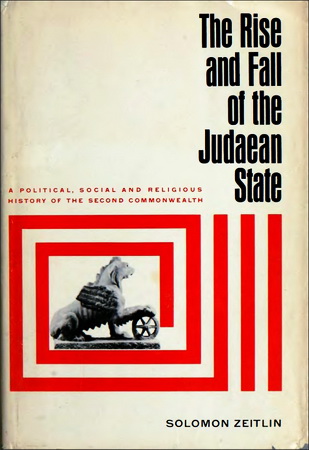
SOLOMON ZEITLIN - The Rise and Fall of the Judaean State. A Political, Social and Religious History of the Second Commonwealth - VOLUME TWO 37 B.C.E.-66 C.E.
THE JEWISH PUBLICATION SOCIETY OF AMERICA Philadelphia/5727-1967 - 469
SOLOMON ZEITLIN - The Rise and Fall of the Judaean State .A Political, Social and Religious History of the Second Commonwealth - VOLUME TWO 37 B.C.E.-66 C.E. - CONTENTS
Foreword
Part ONE The Reign of Herod
- 1. Herod, King of Judaea
- 2. Herod and His Family
- 3. New Trends in Religion. Hillel the Elder
Part TWO Judaea as a Province of Rome
- 1. Herod’s Successors
- 2. Jesus of Nazareth
- 3. Judaea Under the Procurators. Agrippa I
- 4. Judaea as a Province of Rome
- 5. Approach to Conflict
PART THREE Social and Religious Developments: First Century B.C.E. and First Century C.E.
- 1. The Physical Background of Judaean Life
- 2. Economic Life
- 3. Social and Communal Life
- 4. Judaism in an Age of Crisis
- 5. Literature and Religion
Appendices
Notes
Index
Illustrations
SOLOMON ZEITLIN - The Rise and Fall of the Judaean State. A Political, Social and Religious History of the Second Commonwealth - VOLUME TWO 37 B.C.E.-66 C.E. - 1. HEROD, KING OF JUDAEA
In the year 37 B. C. E., the 10th of Tebet, a traditional fast day, fell on Wednesday. That was the day Herod son of Antipater became King of Judaea in fact as well as in name. The Roman Senate had, upon the advice of Antony, already named Herod King of Judaea in the year 40. However, in order to win his throne Herod had to defeat Antigonus, the rightful heir to the Hasmonean throne, and conquer Judaea. He could not accomplish this with his own resources, but when Antony dispatched a Roman army under Sosius, Herod was finally able to complete his conquest and to request the death of Antigonus, whom Antony ordered beheaded. So the cunning, ambitious Herod achieved his goal at the early age of thirty-six.
Yet Herod was not fully satisfied with this exploit; he felt his victory was not complete. True, the country had been subdued, but this had been achieved by the Romans. Antigonus had been Sosius’ captive, not his—and the country was not yet entirely at peace. The Judaeans never acclaimed Herod king. Indeed, they always considered him a stranger and an outsider who had forced himself upon them, and who could maintain his rule only through force. More important, Herod knew that the Romans usually selected as king in a conquered country a member of the royal family in whom they had confidence. Herod had no dynastic claim to the throne of Judaea. He was not a descendent of the royal family and the only right he had to the kingship was through his marriage to Mariamme, the paternal granddaughter of Aristobolus II and the maternal granddaughter of Hyrcanus II. Herod’s marriage into the royal family of the Hasmoneans, consummated shortly before his final victory, helped him to obtain the kingship. These two factors—his dependence upon the Romans and his dis- placement of the Hasmoneans—shaped the life of Herod as a man and as king. In order to hold his throne, he had to guard against Hasmonean ambition, while serving Rome loyally by preventing any disturbances in Judaea which might affect Roman interests in Syria.
What began as a feeling of insecurity ended as madness. Herod became a psychopath and died a malevolent madman. His marriage to Mariamme became a night- mare. The thought that she gave him his claim to the throne of Judaea constantly haunted him. Though he deeply loved Mariamme, he eventually killed her. He saw in the other members of the Hasmonean family con- spirators who wanted to deprive him of his kingship, and he exterminated them too. Anyone suspected of opposition to him was put to death in an inhuman way, and often their families as well. Mental disorder was also evident in other aspects of his private life. He was the only king during the Second Commonwealth who practiced polygamy and, like an Oriental monarch, he introduced eunuchs into his palace and practiced homo- sexuality. After his death, the delegation which appeared before Augustus Caesar accused Herod of having been a rapist.
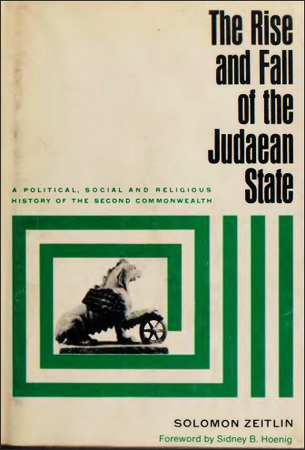
SOLOMON ZEITLIN - The Rise and Fall of the Judaean State. A Political, Social and Religious History of the Second Commonwealth - VOLUME THREE 66 C.E.— 120 C.E.
THE JEWISH PUBLICATION SOCIETY OF AMERICA Philadelphia/5738-1978 - 528
SOLOMON ZEITLIN - The Rise and Fall of the Judaean State. A Political, Social and Religious History of the Second Commonwealth - VOLUME THREE 66 C.E.— 120 C.E. - CONTENTS
Foreword by Sidney B. Hoenig
Part one Rome and Judaea at War: 66-70 C.E.
- 1. The Provisional Government
- 2. The War in Judaea Proper
- 3. The Fall of Jerusalem
- 4. The Roman Victory
Part two Jabneh: The Spiritual Aftermath
- 1. Loss and Survival
- 2. Rabban Jochanan ben Zakkai
- 3. Rabban Gamaliel II
Part three Political and Economic Life After the War
- 1. Juridical and Political Developments
- 2. New Misfortunes
- 3. Demographic Changes in Judaea after the War
- 4. Economic Conditions
- 5. Town and City Life
- 6. Prayer for the Needs of the Land: The Prayer for Rain
Part four Religious Life and Related Concepts
- 1. Religious Development
- 2. Reward and Punishment; Resurrection
- 3. Repentance and Atonement
- 4. The Sabbath
- 5. The Festivals
- 6. Popular Beliefs and Superstitions
- 7. Education
- 8. The Status of Women
- 9. Mamzerut
- 10. The Am Ha-Aretz
- 11. Proselytes
- 12. Messianic Expectations
- 13. Gnosticism and Mysticism
Part five Judaism and Christianity
- 1. Judaeo-Christians and Ebionites
- 2. The Parting of the Ways
Epilogue
Appendix
Abbreviations
Notes
Cumulative Index (Volumes I, II, and III)
Maps
SOLOMON ZEITLIN - The Rise and Fall of the Judaean State. A Political, Social and Religious History of the Second Commonwealth - VOLUME THREE 66 C.E.— 120 C.E. - 1. LOSS AND SURVIVAL
The loss of the Temple and the destruction of Jerusalem were devastating blows to the Judaeans. This was the second cataclysm in their history. In the year 587-86 B.C.E. the Babylonians had captured Jerusalem and destroyed the Temple of Solomon. Now, six and a half centuries later, Temple and city were laid waste once again, this time by the Romans.
The impact of the second catastrophe was incredibly greater than that of the first. The Second Temple had been the magnet which attracted and united the Judean people no matter where they lived. Jerusalem had been held in veneration as the metropolis of all those who adhered to the Judaean faith. The Great Bet Din which sat in Jerusalem had guided and shaped the religious life not only of those who lived in Judaea but also of those who were scattered through the Diaspora. Now all of this had been destroyed, with the result that the Judaean people was in danger of disintegrating. Many Judaeans felt that there was no longer any future for Judaism and that, indeed, their own lives no longer had any meaning.
Hitherto, one who had committed a sin or transgressed the law would go to the Temple and offer a sacrifice to God, in full confidence that he would be forgiven. Now, without the Temple, the Judaeans felt condemned to live in a state of perpetual sin and impurity.
There were Judaeans who found consolation in the belief that the Judaean defeat was not final and that God would shortly restore the Temple. Among those who so believed were the Apocalyptists, who preached that God would soon send a redeemer to smite the enemies of the Judaeans and restore the people of Israel to their own land. Before the war, the Apocalyptists had been only a small group, which had broken off from the Pharisees and by its actions and attitudes had incurred the vehement opposition from the latter. But since catastrophes tend to condition men and nations alike to believe in supernatural events and to hope for miracles, the Apocalyptists won many adherents and rapidly gained influence following the fall of the Judaean state.
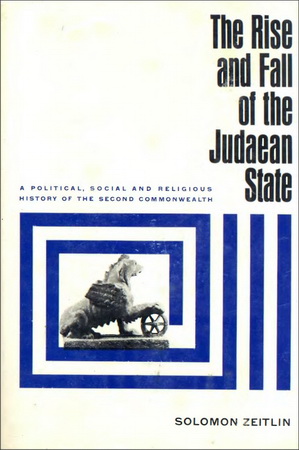

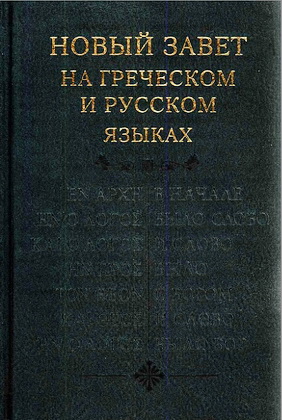

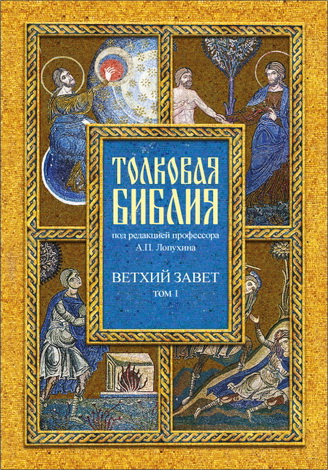
Комментарии (1 комментарий)
Цейтлин - один из числа очень известных и плодоворных авторов иудейской школы, сейчас, увы, подзабытый современными читателями. Этот трехтомник обязатлен для изучающих иудаизм эпохи Второго Храма.
Кстати, у того же автора есть и монография по историческому Иисусу, даже трудно представить, что он там написал...